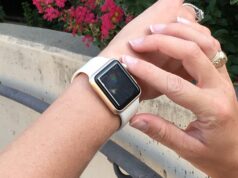
The first safety data on Medtronic’s Micra transcatheter pacing system (TPS) has been announced. In the largest reported sample of a transcatheter pacing system to date, the first 140 patients in the Medtronic Micra TPS Global Clinical Trial showed 100% were successfully implanted with the Micra TPS. The data were presented at the Heart Rhythm Society’s 36th Annual Scientific Sessions, Heart Rhythm 2015 (13–16 May, Boston, USA).
“These initial positive results from the Micra TPS are very encouraging as they demonstrate safe delivery via the femoral vein and placement within the heart in a wide range of patients from diverse geographies,” said LVA Boersma, one of the study’s principal investigators and cardiologist at St Antonius Ziekenhuis Nieuwegein, the Netherlands. “The strong initial safety data show the potential benefits of the pacemaker system’s unique design, including secure attachment to the heart wall along with easy and safe deployment.”
At less than one-tenth the size of a conventional pacemaker and comparable in size to a large vitamin, the Micra TPS is delivered directly into the heart through a catheter inserted in the femoral vein. The transcatheter pacemaker is attached to the heart wall via small tines and delivers electrical impulses that pace the heart through an electrode at the end of the device. The tines are designed to be easily disengaged without causing trauma to the cardiac tissue if the device needs to be repositioned.
The first 140 patients in the study were enrolled by 37 physicians at 23 sites and spanned a wide variety of patient profiles such as age (from 21 to 94 years), weight (ranging from 41 to 148 kilograms, or 90 to 326 pounds), and residence (including Asia-Pacific, Europe and the USA). Patients considered to be at high risk also participated in the study, including patients with lung disease such as chronic obstructive pulmonary disease and pulmonary hypertension.
Patients were followed for an average of 1.9 months, and up to a maximum of 6.5 months. There were 30 adverse events, though only two patients (1.4%) experienced events which resulted in prolonged hospitalisation despite the broad inclusion criteria. This rate is in line with rates observed in studies of traditional pacemakers. Importantly, there were no infections or dislodgments, and no events required surgical reoperation or resulted in death. There were no apparent differences in the risk of adverse events across the various sub-groups of patients such as gender, age, size (body mass index), disease history or other baseline factors. Further, there were no unanticipated serious adverse device events (assumed <5%).
Unlike traditional pacemakers, the Micra TPS does not require leads or a surgical pocket under the skin, so potential sources of complications are eliminated, as are any visible signs of the device. Despite its miniaturised size, the Micra TPS provides the most advanced pacing technology available while being cosmetically invisible and small enough to be delivered with minimally invasive techniques.
In a separate presentation, investigators shared results on the magnetic resonance imaging (MRI) compatibility of the new transcatheter pacemaker. The data showed that patients with one or more Micra TPS devices can safely undergo full body scans in 1.5T and 3T MRI scanners, providing patients with access to the most advanced imaging diagnostic procedures. MRI compatibility was evaluated using methods similar to tests for traditional pacemaker systems, and found the MRI risk with Micra TPS is greatly reduced compared to traditional MR-conditional pacemaker systems because of the small device size and absence of leads.
The Micra TPS was awarded CE mark in April 2015 based on the data from the Medtronic Micra TPS Global Clinical Trial. The trial is ongoing and will continue to evaluate the safety and efficacy of the device through a single-arm, multicentre study that has enrolled more than 700 patients at 56 centres in 19 countries.
In the USA, the Micra TPS is an investigational device and not yet approved for commercial use.









